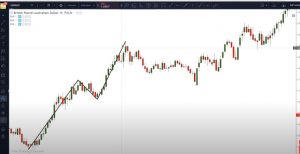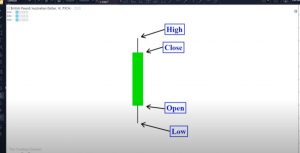 The market has certainly shown its volatility in recent months, hasn’t it? That being said, with money to invest, you can’t let the market captivate your emotions. If you’re an investor, you have to remain an investor and stay in it for the long haul. You can certainly day trade and swing trade, but for the average person, that’s a good way to get burned. The best way to get started, in my opinion, is to read some stock trading course reviews and see which is the best place to start.
The market has certainly shown its volatility in recent months, hasn’t it? That being said, with money to invest, you can’t let the market captivate your emotions. If you’re an investor, you have to remain an investor and stay in it for the long haul. You can certainly day trade and swing trade, but for the average person, that’s a good way to get burned. The best way to get started, in my opinion, is to read some stock trading course reviews and see which is the best place to start.
Primarily, many people don’t have enough money to day trade. Some do, and they are good at it, too. Yet day traders will tell you that they win some and lose some. I have an investment mentor and friend that has told me about his huge wins and his huge losses. To be truthful, that can, of course, happen when it comes to regular investing, too, especially as your nest egg gets larger.
Yet one thing about investing is that everything represents a paper loss until you sell. You’re not losing anything until you sell. But to be clear, those sells are sometimes necessary. You are going to have to decide when it’s time to sell, and stop losses can sometimes be necessary.
There are many different ways to approach investing and let me tell you that you certainly need a plan. Without a solid plan, you’re going to be spinning your wheels. It’s very important that you think about what you want to do and stick with that plan. That doesn’t mean you’re not going to be buying and selling. You have to think about what type of investor you want to be, and you certainly need to learn as much as you can.
I used to think I knew a lot about investing, but I have learned so much recently. For example, I have learned a lot more about stock options and how they can be used as insurance and to make money on the market whether it rises or falls. I have also learned a lot about the newer crypto market and about the Forex market as well.
When it comes to individual stocks, I like to buy, hold and build. I plan to grow my portfolio and provide monthly investment updates. I want to utilize stock options, and I want to invest in the crypto and Forex markets. I have dabbled in all of the above over and over again, and I am preparing to really launch my business.
Writing and investing is what I do. If you are passionate as well about investing, then it’s time to learn as much as you can. Utilizing options, remember that you can make money in the market whether it goes up or down. You have to understand, however, that nothing is a guarantee.
Remember, learn as much as you can. Realize that while the market has been on a downtrend in recent months, it is still at extremely high levels compared to what it was prior to 2016 and post-recession. No one can tell the future. If you’re going to be an investor, you are going to have to really research those moves.
 Are you interested in investing and stock trading? Are you a beginner? If so, then there are a few tips you’ll want to keep in mind. Our top tips for beginners include:
Are you interested in investing and stock trading? Are you a beginner? If so, then there are a few tips you’ll want to keep in mind. Our top tips for beginners include: If you are thinking about investing and stock trading, you should get started. Investing helps you to build financial stability and wealth.
If you are thinking about investing and stock trading, you should get started. Investing helps you to build financial stability and wealth.